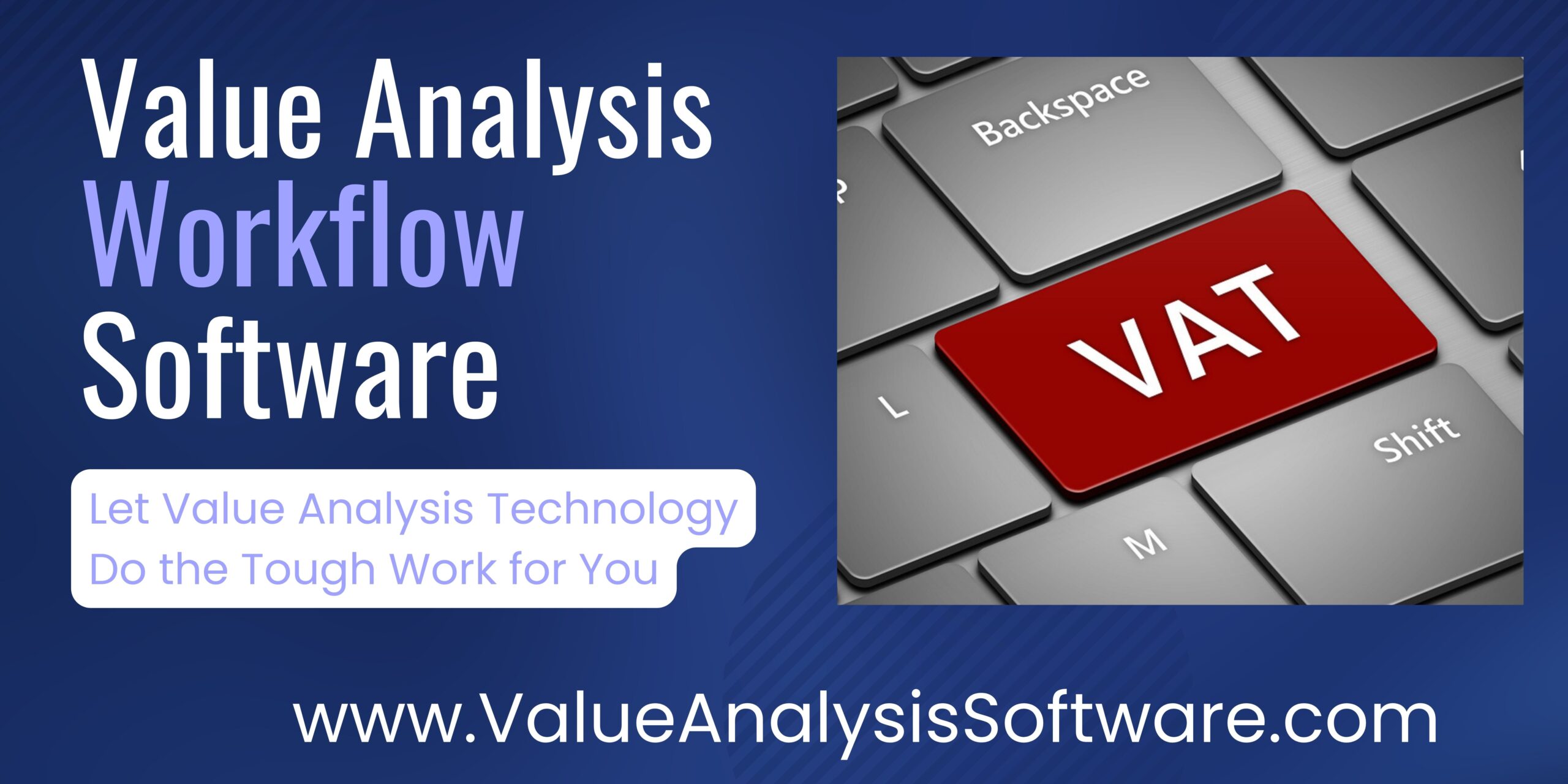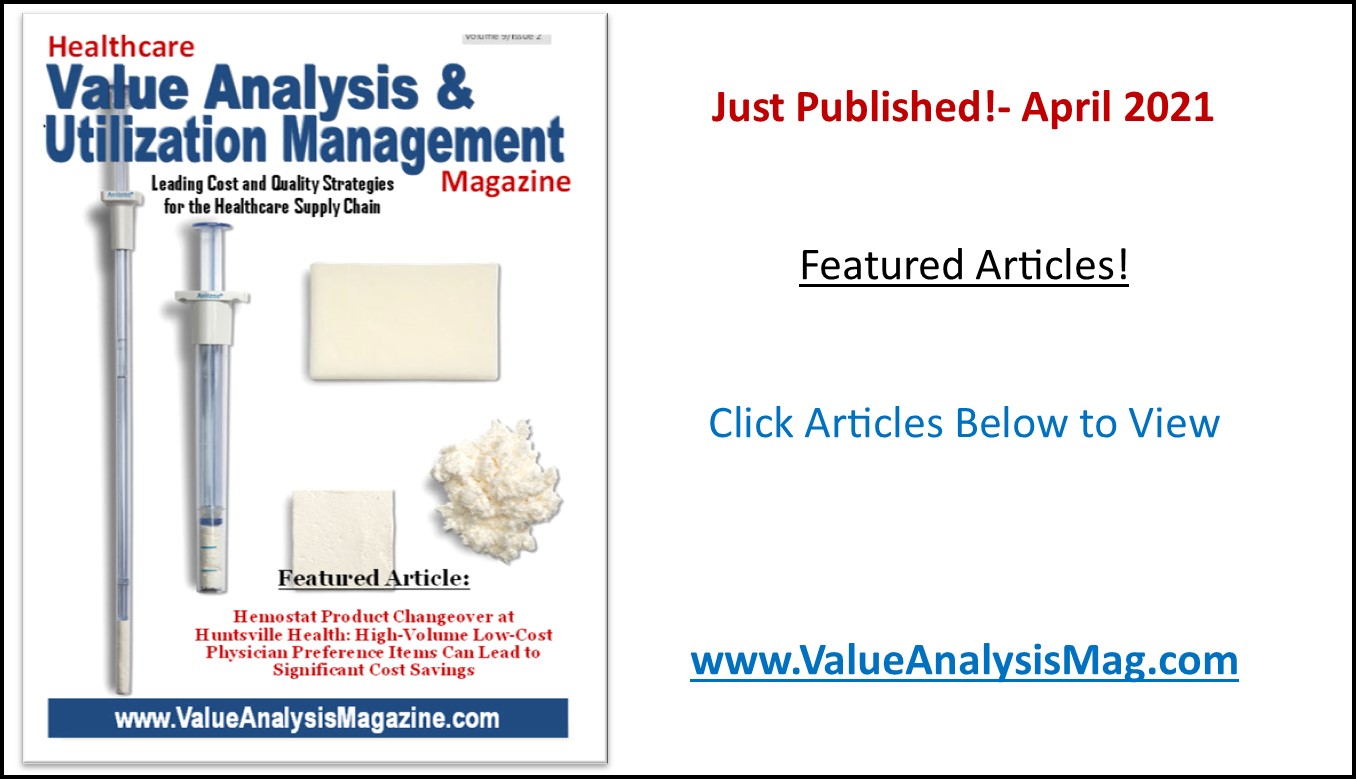“Value analysis can bridge relationships between the business and clinical sides of the organization, which builds success.”
HVAUMM: Could you share with us a little bit of your background before your value analysis career and then how you got into VA?
T. Nelson: The first half of my healthcare career was as a nurse in acute care which included staff nurse and as a nurse manager of the Medical Oncology unit for 12 years. After completing my master’s in healthcare administration, I was interested in exploring opportunities outside of the acute care area. In 2002, Mayo posted for a Director of Value Analysis. This was a new role with a focus on cost containment, promoting product standardization and utilization. This position would be reporting to the Director of Supply Chain Management, not clinical leaders. I met the position criteria of clinical background, management experience, presentation skills, organized, and experience with medical products and suppliers. At this time, suppliers had limited restrictions and usually met with nurses. I Googled, “What is value analysis?” The information was very limited and what I found centered around process improvement, efficiencies, and outcome measurements. I had nothing to lose so I applied and fortunately was offered the position. Then the work began. I was a team of one who needed to define what value analysis was at the Mayo Clinic, how it fit within Supply Chain, how to decrease supply cost, increase contract compliance, develop processes and procedures, and most importantly, obtain clinical staff support.
HVAUMM: What are some important aspects of healthcare supply chain and value analysis that you experienced through the years? What made your Mayo Value Analysis Program successful?
T. Nelson: Important aspects of developing a successful VA program:
1. Understand the culture of the organization and develop programs which fit this culture. Mayo Clinic is a physician led organization with decisions supported by committees, so a Value Analysis Committee was formed which was chaired by a physician leader and membership represented clinical areas.
2. Define what value analysis is for the organization. We defined VA as: The Value Analysis process is objective, data driven, and separates clinical/technical difference from personal preference. Value analysis is the process used to evaluate products based on clinical efficacy, safety, and cost. Value analysis promotes product standardization, decreasing duplication of products AND utilization, using products in the most efficient manner; the right product for the right need.
3. Don’t take it personally, not everyone will like the decisions. Identify what the value analysis steps are and use them for every product/contract review. We used a 5-step process: Initiative, Date, Review & Recommendation, Implementation, and Compliance. One example was the “sippy cup” request. Within the first three months of starting value analysis, a nurse requested a new sippy cup for the pediatric unit. It was low spend with limited uses, so why not just let them order one? I wanted to develop a relationship with this clinical leader and to test our process steps. It cost more to do the product review than the savings generated, but the trust that was developed was priceless. Another product review early in the formation of our program was exam gloves. We had used the same exam gloves for at least 15 years. It was the only glove I had used. Now we were looking at changing, and staff were resistant to any change. It was important to identify the stakeholders and decision makers. We also made sure we reinforced our value proposition. Value = Quality (Safety, Service, & Outcomes)/Cost. Cost is not the driver, but if everything is equal it does influence the final decision. By following the structure, we had established that we were able to convert to an equal glove with a cost savings of 30%.
HVAUMM: How does one become a leader like yourself in a large system as well as in the value analysis community with all the fine work you have done and are doing with AHVAP?
T. Nelson: This is an interesting question. I’m a nurse who has always practiced with a focus on the needs of the patient. I also believe that multiple voices and insights can improve the decisions we make as healthcare providers. Value analysis professionals need to always be questioning why we do what we do and how these actions improve patient care. I also encourage volunteering to test or provide insight into new or current products. Most importantly, be innovative, think outside the box, and your role needs to be relevant to the mission of the organization. Having worked with suppliers, they have heard me say, “I will never lie to you because I won’t be able to remember the lie.” What I mean is the only way either of us can be successful is if we trust and have open conversation. I also believe that the answer will always be no if you never ask the question. I spent 22 of my 46 years at Mayo in Supply Chain. I developed a VA work unit which grew and evolved over the years and provided me with many positive experiences. The successes I’ve had were achieved by using the behaviors I listed above.
HVAUMM: How do you see value analysis professionals bridging the gap beyond just new product requests, rebates, and conversions to dramatically impact clinical excellence/integration and consumption/utilization management?
T. Nelson: Don’t limit the role of VA. It’s not just product requests; think broader. Five years ago, we stepped back and looked at what we did as a work unit and developed three areas of focus. (1) Category Management – Contracts, new product requests. (2) Product Management – Recalls, product disruptions, and quality issues. (3) Operations Support – Product conversions, compliance, products which support quality measures. Once you have defined your scope, now you can identify metrics which support the work of the Value Analysis Team and the value it contributes to the organization.
HVAUMM: Where do you see healthcare value analysis going in the future?
T. Nelson: Value analysis needs to participate in committees that their organizations use to identify future operational needs, such as changes in served patient populations, building expansions, revenue sources, and quality outcomes measurements. Not all of these will have products, but some will, and it gets you exposure. I think of the “Hospital of the Future.” What does this look like? How will it change the way we review and the types of products we use to support patients?
HVAUMM: Value analysis can be a bit of a grind if one lets it be. What are your recommendations to those that fall into a rut (the NPR grind) and need motivation to leap forward with success?
T. Nelson: VA professionals need to remember that the work of value analysis is always putting the need of the patient first. It’s not an easy position. Sometimes you feel caught in the middle of decreasing costs for the organization and clinical staff product requests. Both can be a no-win situation. Value analysis can bridge relationships between the business and clinical sides of the organization, which builds success. Also, value analysis professionals are never alone. Reach out to your VA colleagues at other organizations, ask questions, and develop a network for yourself.
Interview with:
Terri Nelson, BSN, RN, MA, Emeriti Staff Mayo Clinic
Terri Nelson retired from Mayo Clinic in 2024 after 46 years of service. Ms. Nelson has experience in a variety of roles including Staff Nurse, Nurse Manager, Quality Nurse, Senior Director of Clinical Quality Value Analysis Team (CQVA), and Principal Project Lead for Inspirity™.
As Senior Director of CQVA she facilitated the Value Analysis process, development of the Product Formulary, and managed the Product Recall/ Issue System. In addition, the Value Analysis Team provides value analysis support to members of Captis™, a collaborative healthcare network comprised of 90+ members.
In 2022, Ms. Nelson was recognized as one of the top 10 Women in Supply Chain by the Journal of Healthcare Contracting. Terri has been a member of the Association of Healthcare Value Analysis Professionals, serving as the Central Region Director. She received her Bachelor of Science in Nursing from Winona State University, and master’s degree with a dual focus in Health and Human Service Administration and Management from St. Mary’s University.
Articles you may like:





